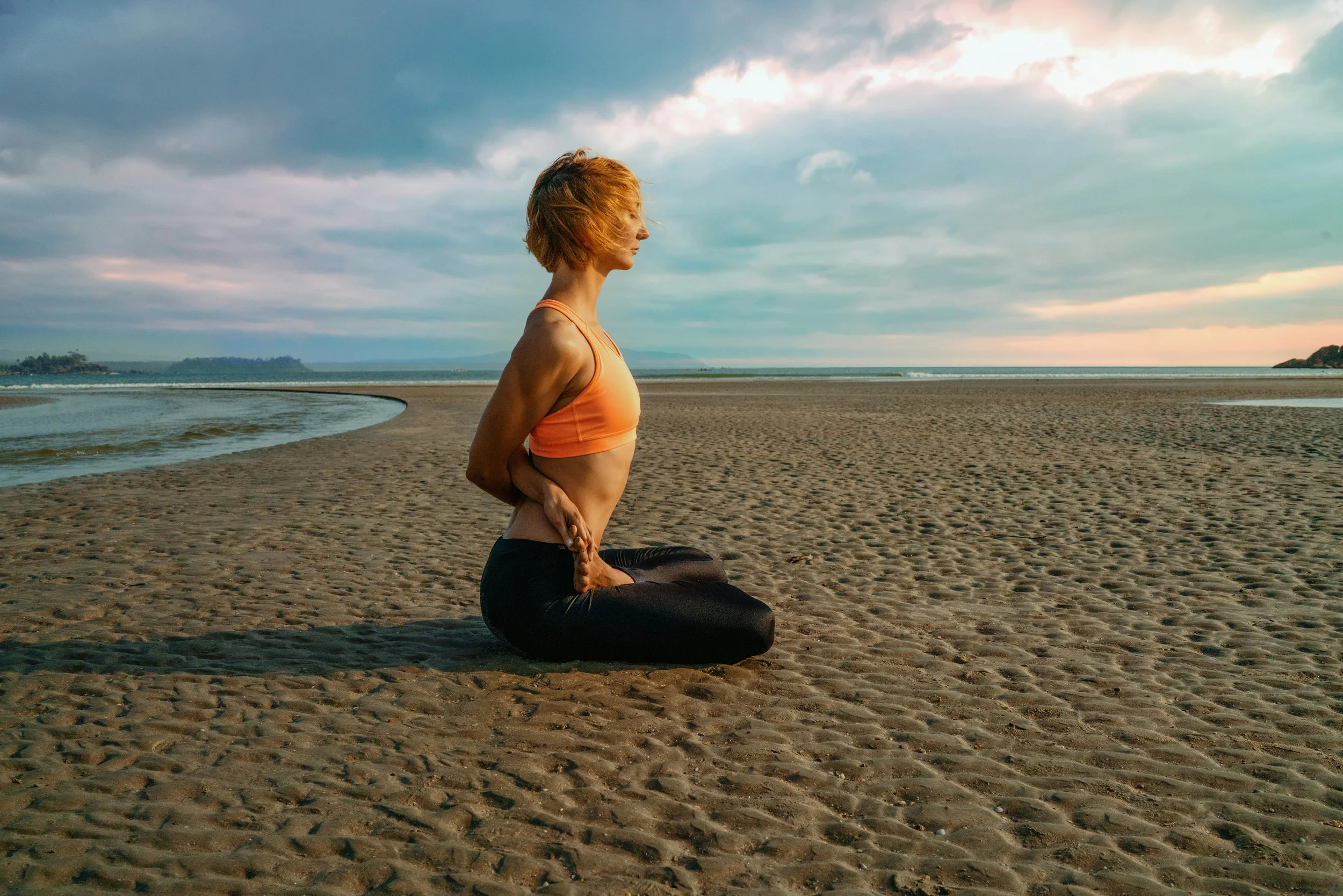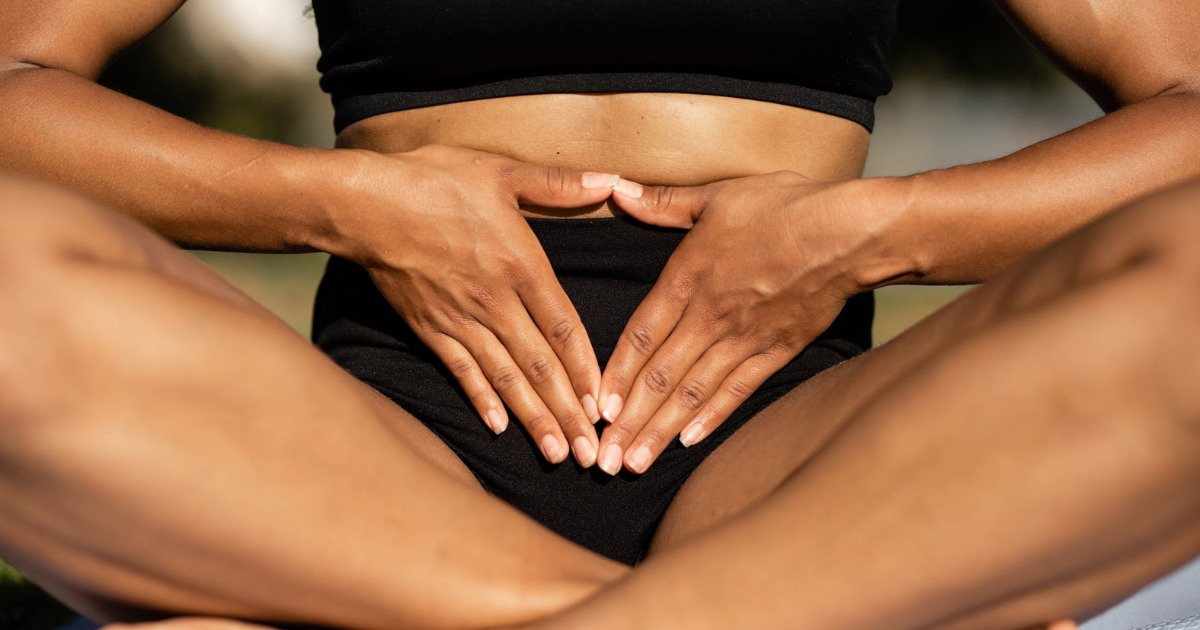Do you engage your bandhas?
If you’ve been practicing yoga for a while, especially in styles like Ashtanga or Vinyasa, you’ve likely heard your teacher mention bandhas. These subtle yet powerful internal locks play a significant role in deepening your practice, enhancing energy flow, and improving stability. But what exactly are bandhas, why are they important, and how do you engage them?
This guide explores the purpose and techniques for engaging your bandhas, along with the benefits they bring to your yoga practice.
What Are Bandhas?
The term bandha comes from Sanskrit, meaning "lock," "seal," or "bond." Bandhas are internal energy locks that involve controlled activation of specific muscles in the body to direct and regulate the flow of prana (life force energy).
There are three primary bandhas:
Mula Bandha (Root Lock): Engaged by contracting the pelvic floor.
Uddiyana Bandha (Abdominal Lock): Activated by drawing the lower abdomen inward and upward.
Jalandhara Bandha (Throat Lock): Engaged by tucking the chin slightly toward the chest.
When all three are engaged simultaneously, it’s called Maha Bandha or the "Great Lock."
Why Are Bandhas Important?
Bandhas serve several purposes in yoga, both physical and energetic:
Energy Control:
Bandhas help contain and direct the flow of prana, preventing energy from leaking and enhancing its circulation throughout the body.Stability and Balance:
Engaging bandhas creates a stable core, improving balance in challenging poses and transitions.Alignment and Posture:
Bandhas support proper spinal alignment, protecting the lower back and enhancing posture during asanas.Connection to Breath:
Bandhas work in harmony with pranayama, deepening the breath and promoting mindfulness.Meditative Focus:
The internal engagement of bandhas draws attention inward, cultivating a deeper meditative state.
How to Engage the Bandhas
Here’s a step-by-step guide to engaging each bandha:
1. Mula Bandha (Root Lock)
Location: Pelvic floor, the muscles at the base of the spine.
How to Engage:
Sit or stand in a comfortable position.
Contract the muscles of the pelvic floor as if stopping the flow of urine.
Maintain a subtle, steady engagement—avoid over-tensing.
When to Use:
During poses requiring stability, such as Tree Pose (Vrksasana) or Warrior III (Virabhadrasana III).
To initiate movements in vinyasa transitions.
Benefits:
Strengthens the pelvic floor.
Creates a foundation of stability for asana practice.
2. Uddiyana Bandha (Abdominal Lock)
Location: Lower abdomen, just above the navel.
How to Engage:
Exhale completely, emptying your lungs.
Pull your lower belly inward and upward toward your ribcage.
Keep your diaphragm lifted without restricting your breath.
When to Use:
During pranayama practices or in poses like Downward Dog (Adho Mukha Svanasana) and Boat Pose (Navasana).
Benefits:
Tones abdominal muscles and internal organs.
Supports spinal alignment and protects the lower back.
3. Jalandhara Bandha (Throat Lock)
Location: Throat and neck area.
How to Engage:
Sit comfortably with a tall spine.
Lower your chin slightly toward your chest without collapsing your neck.
Maintain length in the back of your neck.
When to Use:
During pranayama and meditation to prevent energy from escaping upward.
Benefits:
Stimulates the throat chakra (Vishuddha).
Regulates energy flow between the head and body.
Tips for Engaging Bandhas Effectively
Start with Awareness:
Focus on one bandha at a time to develop awareness and control.Use the Breath:
Coordinate the activation of bandhas with your breath for a more integrated practice.Avoid Over-Tensing:
Bandhas should feel subtle and natural, not forceful or rigid.Practice Gradually:
Bandha engagement requires practice. Start with short periods of activation and gradually increase as your awareness grows.
When Should You Engage Your Bandhas?
In Dynamic Poses: Engaging bandhas provides core stability and balance during transitions like jumping forward or back in a vinyasa.
In Pranayama: Bandhas enhance breath control and energy circulation during techniques like Nadi Shodhana or Kapalabhati.
In Meditation: Activating bandhas directs energy inward, supporting focus and stillness.
In Everyday Life: Bandhas can improve posture and core strength, making them beneficial beyond the mat.
Benefits of Consistently Engaging Your Bandhas
Core Strength and Stability
Engaging bandhas strengthens the core muscles, which are essential for both yoga and everyday activities.Enhanced Focus and Mindfulness
Bandha engagement draws your awareness inward, deepening your connection to the present moment.Energy Efficiency
Containing prana through bandhas prevents energy leakage, leaving you feeling more energized after practice.Improved Transitions
Activating bandhas during transitions helps create smooth, controlled movements between poses.Spiritual Growth
Bandhas support energetic balance, which can enhance meditative and spiritual aspects of your practice.
Conclusion
Engaging your bandhas is an essential part of deepening your yoga practice. These subtle energy locks not only provide physical stability and core strength but also enhance your connection to breath, focus, and the flow of prana. Whether you’re practicing dynamic sequences or sitting in meditation, the integration of bandhas can transform your experience on the mat.
So, do you engage your bandhas? If not yet, start exploring them one by one and notice how they enhance your practice and awareness. With time and consistent effort, bandhas can become a natural and integral part of your yoga journey.



